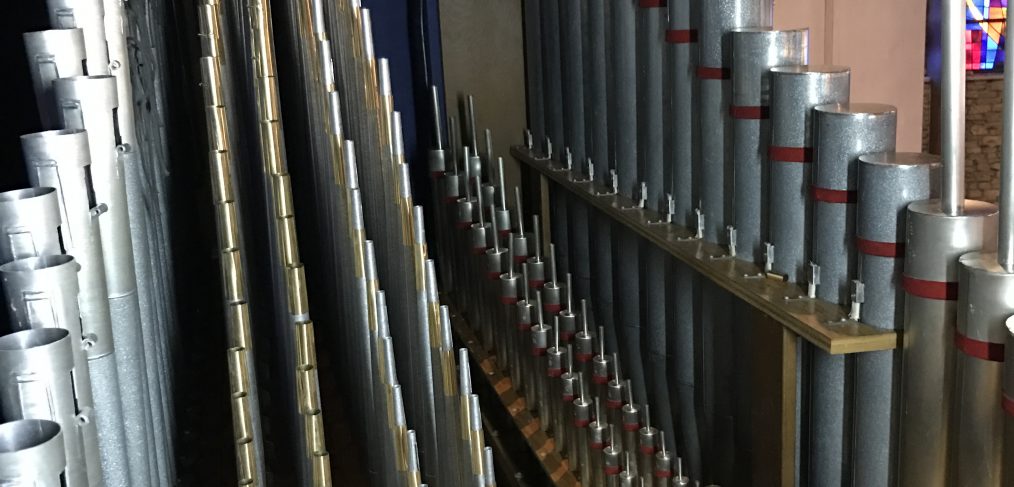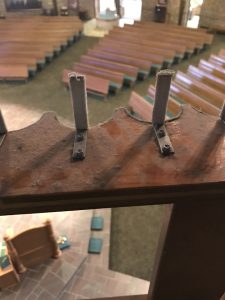
Facade racks covered with dust
Those of you who follow our Facebook feed have most likely seen our recent posts of our organ cleaning project for St. James Catholic Church in Elizabethtown, KY. Though a small instrument, the organ at St. James had accumulated much dirt and debris over its forty-year lifespan, and we encouraged the parish to have us clean the organ. Taking this to heart, we were commissioned to perform this task, and it was executed in a four-day session which resulted in a significant improvement to the chambers and pipework that will help not only to keep our crew from looking like chimney-sweeps, but which will aid in the stability of the tuning and speech of the instrument.
Allow us to further explain: Organ pipes are made to direct a
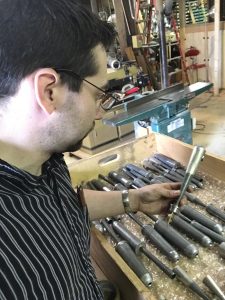
David Schroth Jr. inspecting the Trumpet before cleaning
fine wind sheet in such a way that the agitation thereof against the upper lip sets the air column inside the body of the pipe in motion, resonating a tone. Through the delicate voicing process, this tone can be changed in very subtle ways to produce exactly the quality of tone desired. As dust settles into the pipe, it can (especially with smaller pipes) begin to have an influence on the tone, and can make tuning or speech unstable. In a case where there is clearly debris in a pipe that is not behaving, we can often set a pipe aright merely by blowing the dust out. Thus, it is advisable, especially in buildings where significant dust tends to accumulate, to have the inside of the organ cleaned by organ specialists as the need arises.

David Pilkinton laying out cleaned Gemshorn pipes for installation.
In addition to merely cleaning everything in the organ, this gives us the chance to correct issues in the instrument which go beyond the scope of regular maintenance, especially since removing the pipework often gives us better access to the innards of the organ.
In so doing, we effectively return the inner part of the chamber, and the pipes, to the same condition as when they were brand new. We also take the time to go through the speech of all the pipes and make sure all are speaking well and proper. In the case of the organ at St. James, this regulation had been badly needed for quite awhile With the pipes free of debris and other issues corrected, we could perform this basic regulation, knowing that these minor corrections will hold into the future, bringing a new level of stability to the instrument.

Newly-cleaned zinc pipe basses
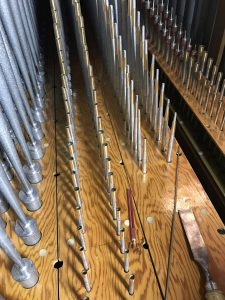
Gemshorn and Erzahler pipes in their newly-cleaned racks
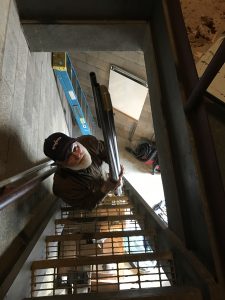
James Forsee handing pipes up into the chamber

